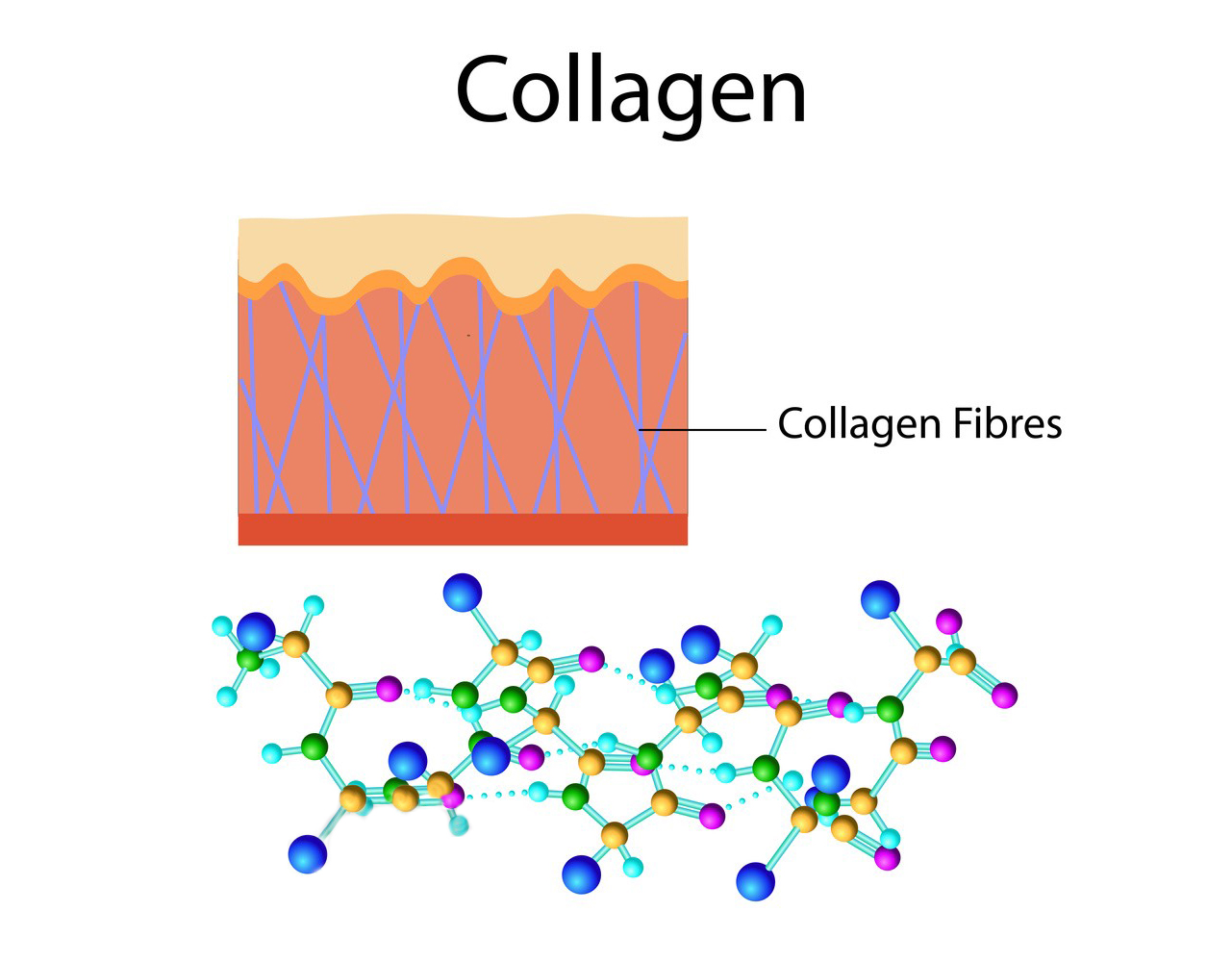Collagen is a complex protein that plays a crucial role in the structure, strength, and flexibility of various tissues in the human body. It is the most abundant protein in mammals, constituting about 25-30% of the total protein content. Collagen provides structural support to connective tissues such as skin, bones, tendons, ligaments, cartilage, and blood vessels. It is produced by various cell types, primarily fibroblasts, osteoblasts, and chondrocytes.
Origin of Collagen:
Collagen is synthesized within cells as procollagen, which is then secreted into the extracellular matrix (ECM). In the ECM, specific enzymes modify and cross-link the procollagen molecules, resulting in the formation of collagen fibers. These fibers provide strength and resilience to tissues and are responsible for maintaining the structural integrity of organs.

Properties of Collagen:
- Structure: Collagen has a unique triple-helical structure, where three protein chains (alpha chains) are coiled around each other to form a rope-like structure. This helical structure is crucial for the strength and stability of collagen fibers.
- Types: There are at least 28 different types of collagen identified in the human body, each with a specific function and distribution. The most common types include Type I, Type II, Type III, Type IV, and Type V collagen. These different types are found in various tissues and organs, contributing to their specialized functions.
Types and Functions:
- Type I: Found in skin, bones, tendons, and ligaments. Provides tensile strength and resistance to stretching.
- Type II: Found in cartilage, providing elasticity and shock absorption.
- Type III: Found in skin, blood vessels, and internal organs. Often associated with structural support and flexibility.
- Type IV: Found in basal lamina, a component of the basement membrane that separates layers of tissue.
- Type V: Found in cell surfaces and hair, playing a role in tissue development and interaction.
Degradation and Turnover: Collagen undergoes constant remodeling and turnover. Enzymes like collagenases and matrix metalloproteinases break down old collagen fibers, allowing new ones to replace them. This turnover is crucial for maintaining tissue health and repairing damaged tissues.
Age and Health: Collagen production tends to decrease with age, leading to reduced skin elasticity, joint mobility, and overall tissue strength. This can contribute to issues like wrinkles, joint stiffness, and increased risk of injury.
Medical Applications: Collagen has various medical applications, including wound healing, tissue engineering, cosmetic procedures, and treatment of joint disorders. It’s used in products like dermal fillers, wound dressings, and scaffolds for tissue regeneration.
In summary, collagen is a multifaceted protein with a diverse range of functions. Its unique properties and versatile distribution in the body make it an essential component for maintaining tissue integrity, strength, and flexibility.
